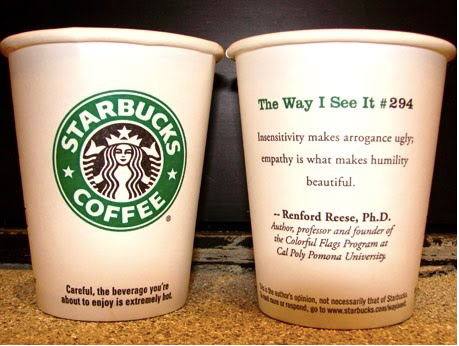Empathy, the ability to step into the shoes of another person, is a skill accentuated by almost everyone in the business of human interaction.
Being empathic, makes one feel understood – gives one the freedom to express their feelings and perspectives without fear of judgement. It’s like dropping a ton of weight and then experiencing a huge sigh of relief.
Practising empathy is simple, doable and most importantly necessary to bridge the gap between friends, family members or a professional and his/her client.
Here’s the interesting part, empathy, is not only used by psychologists and psychiatrists, it’s used even by your local barista. It helps them serve their customers better, especially the problem ones who are almost always never satisfied.
Peter Ubel, in an article for Forbes, draws a comparison between the effectiveness of displaying empathy by Starbucks employees and physicians. He noted, that despite the years spent learning complicated Latin words, procedures and understanding the human body, most physicians fall short at displaying, the much needed, empathy to their patients. However, Starbucks employees are far superior at displaying empathy to their unhappy customers; and he credits this to their rigorous training in empathy.
More individuals leave Starbucks happy and comforted, because of their interaction, than the physicians clinic.
Starbucks, created their own LATTE of empathy for their employees. Unfortunately, it is not a specially brewed coffee, that you drink and miraculous become empathetic (though we really wish it was!). It’s a simple step-by-step procedure that guides employees to deal with different people.
L – Listen to them.
Give the other person, the space and freedom to freely express themselves. All you have to do is listen, be silent, and occasionally go “umm”.
Warning: Do not cut the person mid-sentence. Give them their space to express how they feel – disappointed, disgusted, unhappy, scared, terrified, ashamed or whatever else it may be.
A – Acknowledge.
Recognise their feelings. It’s a simple, “I understand you must be…”. It requires you to restate and rephrase what they said.
Warning: Stating you understand how they feel, is hugely effective only after they’ve expressed themselves. Even if you genuinely understand how they feel, know what to say, do not begin your verbal diarreah until the person has had the space to express themself.
T – Take Action
Do something about it! Now that you’ve heard them out, understood what they are going through; now do something about it. This can be a simple hug, using comforting words, or getting them the right coffee.
T – Thank them
It’s difficult to share your feelings with anyone. Appreciate that the other person has trusted you enough to open up and speak freely.
E – Explain
Everyone needs closure, a mere suggestion of why it happened can provide closure or some direction to reflect, rethink or react.
Warning: Don’t jump the gun, and explain why it happened. One needs to experience an emotional catharsis, let go of the negative emotions and have the emotional space to accept something new.
Reference
Ubel, P. (2012, November 02). Do Starbucks Employees Have More Emotional Intelligence than Your Physician? Retrieved April 13, 2014, from Forbes.com: http://www.forbes.com/sites/peterubel/2012/11/02/do-starbucks-employees-have-more-emotional-intelligence-than-your-physician/







